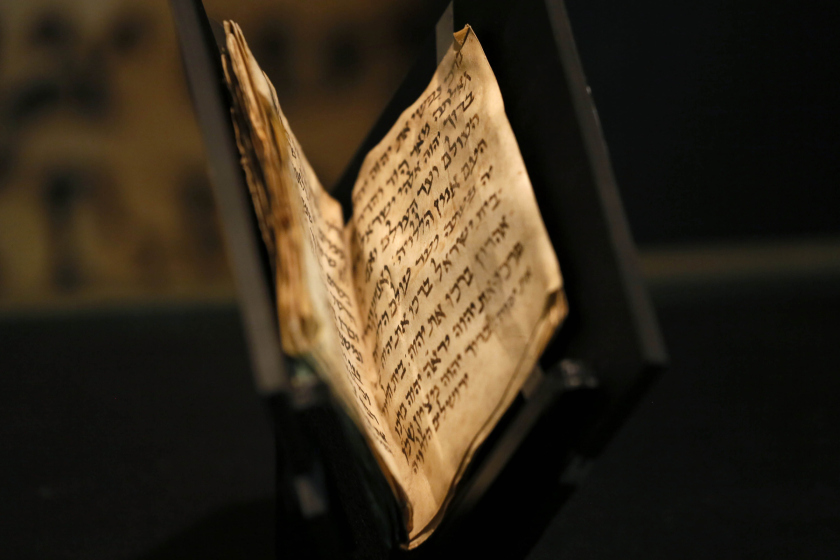 During the 16th and 17th centuries, many Jews that faced persecution in Spain and Portugal fled to Amsterdam, where they enjoyed religious tolerance.
During the 16th and 17th centuries, many Jews that faced persecution in Spain and Portugal fled to Amsterdam, where they enjoyed religious tolerance.
In the early 17th century, there were three Sephardic communities: Beth Jacob, Neve Shalom and Beth Israel. In 1639, these communities merged to form the Portuguese Jewish community of Amsterdam.
In 1665, they commissioned architects Elias Bouwman and Daniel Stalpaert to build a new synagogue. The architects were inspired by the Temple of Salomon in Jerusalem and built a spectacular synagogue. Construction began in 1671 and in 1675 the Portuguese Synagogue also called the Esnoga (which is the Ladino word for synagogue) was finishedit was the largest synagogue in the world.
Over the entrance is a gilded Hebrew inscription, a verse from Psalm 5:8: In the abundance of Thy loving kindness will I come into Thy house.
Inside, the synagogue is designed in the Sephardic style with the beautiful wooden ark and bimah at opposite ends of the interior. The seating is arranged in two equal halves, which face each other across a central aisle. The floor is covered with fine sand to absorb moisture from shoes and muffle noise.
The womens gallery is supported by 12 stone columns to represent the 12 tribes of Israel. Two large brass chandeliers hold a total of 1,000 candles, all of which are lit during services.
In 2012, Israeli Prime Minister Benjamin Netanyahu called it one the most beautiful synagogues he had ever seen
Before the Nazis occupied Holland, 120,000 Jews lived in Amsterdam. After the war, only 20,000 Jews were left in all of the Netherlands. Today, between 15,000 and 20,000 Jews reside in Amsterdam.
The Esnoga miraculously survived the Nazis unscathed. The synagogue still holds services, with high attendance on holidays.
The synagogues complex includes the winter synagogue, the former home of the congregations midrasha (an institute of Jewish studies for women), and the site of the congregations regular weekly services.
The winter synagogue is covered in a deep red carpet embroidered with a phoenix rising from the ashes, a symbol of the community which was reintroduced after World War II.
Around the main building, there are various offices and archives, the rabbinate, a mortuary and the Etz Haim (Tree of Life) library, the oldest library still-functioning where it was built, in the world. It that holds valuable collections of Sephardic manuscripts.

The Jewish Historical Museum is located down the block in the heart of Amsterdams old Jewish Quarter. It is home to a large collection of religious objects, including gold-inlaid Torah coverings and silver and gilded Jewish ornaments. There is also Jewish art, historical artifacts, and multimedia presentations. The exhibitions show the history of the Jews in the Netherlands from 1600 to the present day,
The Jewish Historical Museum is the perfect place to get a glimpse of the triumphs and tribulations of Amsterdams Jewish community. The museum has in its possession rare documents, artifacts and manuscripts. It is a world-class museum of Jewish history.



